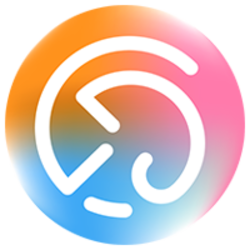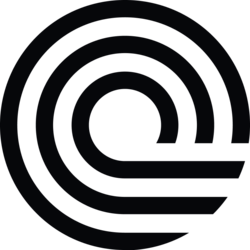Maria de Lourdes Zollo is the CEO and Co-Founder of Bee. She previously worked at Twitter as a Senior Product Manager and creator. Maria de Lourdes Zollo attended Università degli Studi di Milano.
Bee is a personal AI wearable that transforms conversations and tasks into summaries, insights, and reminders. It learns and adapts, offering proactive assistance while ensuring privacy with a mute function. With advanced noise filtering, support for 40 languages, and a seven-day battery life, Bee is designed for seamless, uninterrupted use. Its modular design allows flexible wear options, and it integrates smoothly with iOS, providing an intelligent companion that enhances productivity and keeps users present in their daily lives.
What inspired you and Ethan to co-found Bee, and how did your prior experiences at TikTok, Squad, and Twitter shape your vision for this personal AI wearable?
The journey to Bee began with an amusing realization – my first prototype was actually focused on makeup! I was trying to solve a personal frustration around making informed purchasing decisions without constantly having to rebuild context on Google or Amazon. This experience led me to explore a broader question about personalized AI understanding.
When Ethan and I connected, we discovered a fascinating alignment. He had previously explored similar concepts in 2016 with Olabot (before pivoting to Squad), investigating whether AI could retain our memories, interests, insights, and values. While the technology wasn’t ready then, I saw an opportunity to revisit and reimagine this concept in a completely new way.
My experience at TikTok had deeply impressed upon me the power of truly understanding users and delivering personalized experiences. With Ethan, we recognized the potential to create something revolutionary – AI that doesn’t just respond to commands but builds genuine understanding through continuous presence.
The timing was perfect. The technology had finally caught up to enable our vision, and our experiences at major tech platforms had shown both the potential and limitations of existing AI approaches. We founded Bee because we believe AI should do more than just execute commands – it should understand your world, anticipate your needs, and grow alongside you. This vision of technology as a natural extension of your life, building deep personal understanding through continuous presence, is now finally possible.
Bee is focused on making AI more human-centered and contextually aware. Why is this such an important focus for you, and how do you see this shaping the future of AI technology?
Making AI more human-centered and contextually aware is crucial because we’re at a transformative moment in our relationship with technology. Right now, we’re constantly bombarded with notifications and tasks that fragment our attention and disconnect us from what truly matters in our lives. Technology promised to enhance our existence, but instead, it often pulls us away from being present in the moment.
This is why we’re moving away from the traditional command-based AI model. We believe AI should work in harmony with human attention rather than competing for it. By creating AI that builds genuine understanding through continuous presence, Bee can quietly absorb context and handle mundane tasks while allowing you to stay fully engaged in your life.
When your AI truly understands context, it can transform both physical and digital experiences into meaningful insights without demanding your constant attention. It knows when to step in and when to stay quiet. This mindful approach represents the future of AI – technology that doesn’t just respond to requests but actually helps you be more present by understanding the natural rhythm of your life. It’s about creating technology that respects our humanity while making our lives simpler, more connected, and more intentional.
Building a hardware product like Bee in just 10 months is no small feat. What were some of the biggest challenges, and how did you overcome them?
Building Bee in just 10 months was a journey that required rethinking traditional hardware development. The biggest challenge wasn’t just technical, but strategic: making the right decisions at the right time. Unlike software where you can quickly iterate and reverse course, hardware development is much less forgiving. A single wrong decision can cost months of time and significant resources.
To overcome this, we took a deliberately iterative approach. Instead of aiming for perfection from the start, we began with a simple hardware design that we could prototype quickly. We built a strong community of early users here in San Francisco who provided invaluable feedback. This close relationship with our users allowed us to learn and adapt rapidly. Over the course of a year, we went through four different device iterations – they weren’t pretty, but each version taught us crucial lessons about what users truly needed and wanted.
This rapid prototyping and close user feedback loop was key to our success. While the early prototypes might not have looked beautiful, they helped us avoid the classic hardware trap of spending too much time perfecting something users might not actually want. By staying close to our users and maintaining a quick iteration cycle, we were able to create a product that genuinely serves user needs rather than just our assumptions.
How did you approach integrating AI with hardware while keeping it user-friendly and affordable?
Our approach to integrating AI with hardware centered on intentional simplicity. We focused on creating a clean, minimal design using carefully selected materials that allow us to keep costs down while maintaining quality. But the real magic of Bee isn’t in complex hardware – it’s in the software experience.
We’ve made Bee accessible through our Pioneer Edition at $49.99 (regular MSRP $99.99), with a $12 monthly subscription that unlocks advanced capabilities. This pricing structure reflects our belief that powerful personal AI should be accessible to everyone.
What makes Bee special is how the AI learns and adapts to you over time. The hardware provides the continuous presence needed for this understanding to develop, while the software transforms your daily experiences into meaningful insights and actions. This focus on software-driven value, combined with simple hardware design, allows us to deliver an impactful AI experience at an accessible price point.
What sets Bee apart from other AI wearables that have struggled to gain traction in the past?
Our approach stands apart because we believe the future of personal AI isn’t about creating another standalone device – it’s about building continuous understanding of your world. Instead of focusing primarily on hardware capabilities, we’re taking a software-first approach where the device serves as your AI’s connection to your daily life.
What makes Bee different is how we’re building it – fast iteration directly with our community, learning and adapting based on real user experiences. The Bee device itself is intentionally simple, serving as your AI’s ears, while our software creates a seamless connection between your digital and personal life. Our seven-day battery life enables this continuous presence, transforming both online interactions and real-world conversations into meaningful insights.
We see personal AI as a bridge between your digital footprint and physical world, not just another gadget.
The modular design of Bee is intriguing. What inspired this flexibility, and how do you see users benefiting from it?
The modular design reflects our understanding that personal technology should adapt to each user’s unique lifestyle. Our approach is simple – provide a core device while letting users customize how they wear and use Bee through different accessories based on their individual needs.
What’s fascinating is how our community has embraced this flexibility. We’re actually seeing users request even more accessories and ways to adapt Bee to their daily lives.
Privacy is a major concern with devices that continuously listen and process data. How does Bee address these concerns while maintaining its functionality?
Privacy is fundamental to how we’ve designed Bee from the ground up. We follow a simple principle: your personal moments stay personal. All conversations are processed in real-time and immediately deleted – we never store audio recordings. Users have complete control over their data, with the ability to delete anything at any time.
We maintain the highest security standards because we believe trust is essential for personal AI. We never use your data for AI training, never sell it, and never share it with third parties.
Bee combines AI and wearables in a unique way. Can you share insights into the development process and how you balanced innovation with practicality?
Developing Bee meant reimagining how AI and hardware could work together. We focused on creating seamless integration between physical and digital experiences, connecting with email, calendar, and other services while learning from real-world interactions. Our beta testing of automated agents for tasks like sending emails and WhatsApp messages shows how we’re pushing the boundaries of personal AI capabilities.
How do you envision Bee enhancing people’s daily lives in ways that existing technologies haven’t?
Bee helps people stay present by understanding their world and handling tasks in the background. It captures key moments, reminds users of commitments, and reduces distractions, allowing them to focus on what truly matters.
How do you see AI wearables evolving over the next five years, and what role do you envision Bee playing in this ecosystem?
The future of AI wearables lies in creating AI that truly understands context and integrates seamlessly into daily life. Bee is leading this shift by focusing on continuous learning and adaptation rather than just adding more features.
Thank you for the great interview, readers who wish to learn more should visit Bee.
Credit: Source link







































